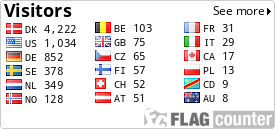
Stevns Klint blev den 22. juni 2014 optaget på UNESCO's Verdensarvsliste.
Stevns Klint has been included in UNESCO's World Heritage List on June 22nd 2014
Stevns klint består af sedimentære aflejringer fra tertiær og kridttiden langs halvøen Stevns' østkyst.
Klinten strækker sig fra Bøgeskov Havn i nord til Rødvig i syd. Længden er 17 km, og klinten er 41 m høj på det højeste sted.
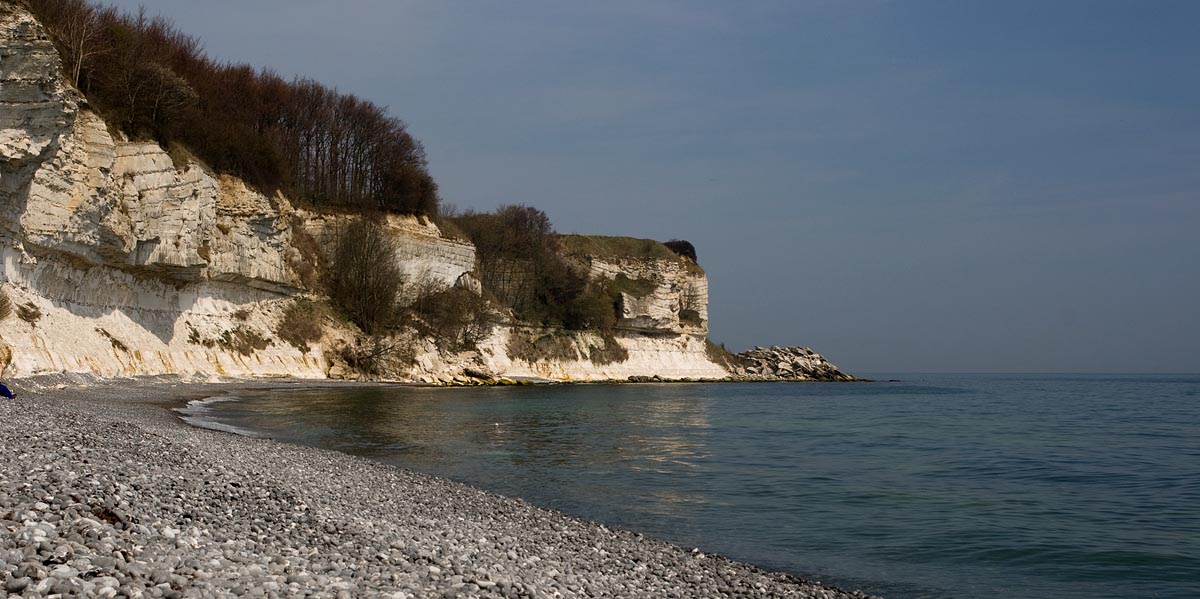
Den nederste del af klinten består af skrivekridt, som er dannet i kridttiden for ca. 65 millioner år siden. På den tid var området dækket af hav. Selve kridtet er dannet af kalkskaller (kokkolitter) fra alger. Når algerne døde, sank de til bunds og dannede et lag af kalkslam, som i tidens løb er blevet til kridt.
Lige over det hvide skrivekridt findes et ca. 3 m tykt lag af gråkridt. Her er god mulighed for at finde fossiler, f.eks. forstenede søpindsvin, i alle lag.
Oven over kridtet findes et mere gulligt lag, kaldet bryozokalk, opkaldt efter de mosdyr, som dannede laget. Dannelsen af bryozokalken er sket i tertiærtiden, for ca. 60 millioner år siden.
Midt mellem de to geologiske tidsperioder findes et tyndt lag gråligt ler, på dansk Fiskeler, som indeholder et på jorden sjældent forekommende grundstof.
Ifølge den gængse teori uddøde dinosaurerne ved kridttidens slutning, som følge af de voldsomme klimatiske forandringer, som et meteornedslag på den Mexicanske Yucatanhalvø medførte. På grund af nedslaget slyngedes store mængder materiale op i atmosfæren og afskærmede sollyset. Herved faldt temperaturen drastisk, med masseuddøen af arter til følge. Det materiale, som slyngedes op i atmosfæren, indeholdt også rester af selve meteoren. Med tiden dryssede det ned igen. Det er netop det lag, som kan ses på Stevns Klint.
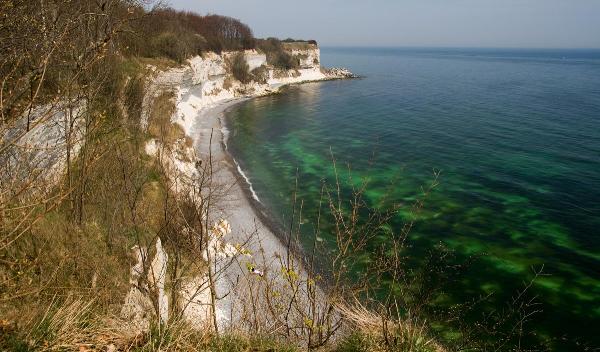
For at logge cachen skal man:
- Hvis du har lyst kan du uploade et billede taget på cachens koordinat, eller hvor du på cachens koordinat står med en GPS i hånden.
- Sende en e-mail til os, hvor du besvarer følgende to spørgsmål:
- Hvad er navnet på det specielle sjældne grundstof, som man kan finde på Stevns Klint.
- I klinten findes nogle vandrette lag af en hård sten. Hvad er navnet på denne sten?
Du behøver ikke afvente vort svar for at logge cachen på geocaching.com. Hvis svaret er forkert, kontakter vi dig.
The cliffs of Stevns consist of sedimentary deposits from the tertiary and chalk eras along the east coast of Stevns peninsula.
The cliffs stretch from Bøgeskov port in the north to Rødvig to the south. The length is 17 km and in the highest spot the cliff has an altitude of 41 m.
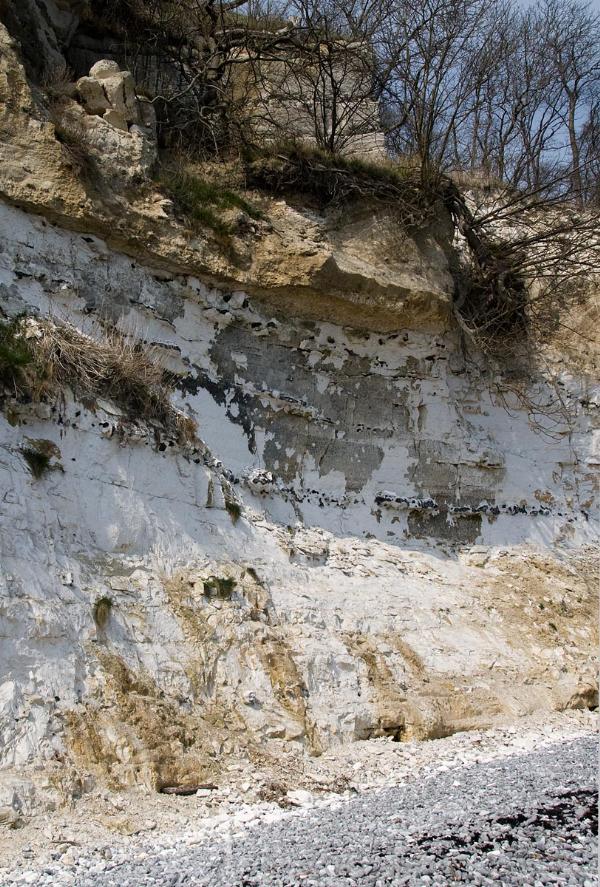
The lower part of the cliff consists of writing chalk, which was formed in the chalk era around 65 million years ago. At that time, the area was covered by the sea. The chalk is made of lime peel (coccolites) from algae. When the algae died, they sank to the bottom and formed a layer of lime, which over time has become chalk.
Just above the white chalk is a app. 3 m thick layer of grey chalk. Here's a good chance of finding fossils, for example. fossilized sea urchins, in all the layers.
Above the chalk is a more yellowish layer called bryozochalk, named after the moss that formed the layer. The bryozochalk was formed in the Tertiary era, app. 60 million years ago.
In the middle between the two geological eras, we find a thin layer of greyish clay, in Danish called fishclay, that contains a rare chemical element.
The prevailing theory is that the dinosaurs became extinct due to the dramatic climatic changes caused by a meteoric strike on the Mexican Yucatán Peninsula. Because of the impact lots of material was slung into the atmosphere, blocking the sunlight. This caused the temperature to drop dramatically, with the mass extinction of species as a result. The material, which was slung up into the atmosphere also contained remnants of the meteor. Over time it sedimented on earth. It is precisely this layer that can be found at the cliffs of Stevns.
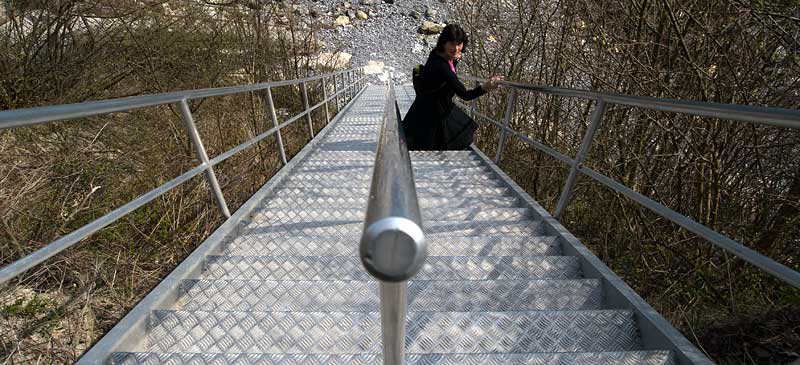
To log the cache you must:
- If you like you can upload a photo of the view from the cache coordinate or of yourself standing at the cache coordinates with a GPS in your hand.
- Send us an email with the answers to the following questions:
- What is the name of the special rare chemical element, which can be found at the cliffs of Stevns.
- In the cliff you can identify layers of hard stone. What is the name of this stone?
You do not have to wait for our response to log the cache on geocaching.com. If the answer is wrong, we will contact you.
På parkeringspladsen opkræves en afgift på 30 kr. (4 EUR), som går til vedligehold af området.
The parking fee is 30 DKK (4 EUR), which goes to the maintenance of the area.
